The B-17 Bomber: A World War II Icon
Why is the B-17 bomber a legendary aircraft? Known as the ‘Flying Fortress,’ it was vital in World War II due to its durability and firepower. This article delves into its development, design changes, and key missions that highlighted its importance in U.S. military strategy.
Key Takeaways
-
The B-17 Flying Fortress, developed in the 1930s, revolutionized strategic bombing with its long-range capabilities and advanced armament, earning its nickname due to its robust defense features.
-
The evolution of the B-17 through various models, particularly the B-17G, incorporated significant enhancements in firepower and technology, solidifying its role as a key asset in World War II air operations.
-
B-17s played a crucial role in both the European and Pacific theaters, executing strategic bombing missions that severely impacted enemy infrastructure and contributed significantly to the Allied victory.
The Birth of the B-17 Flying Fortress
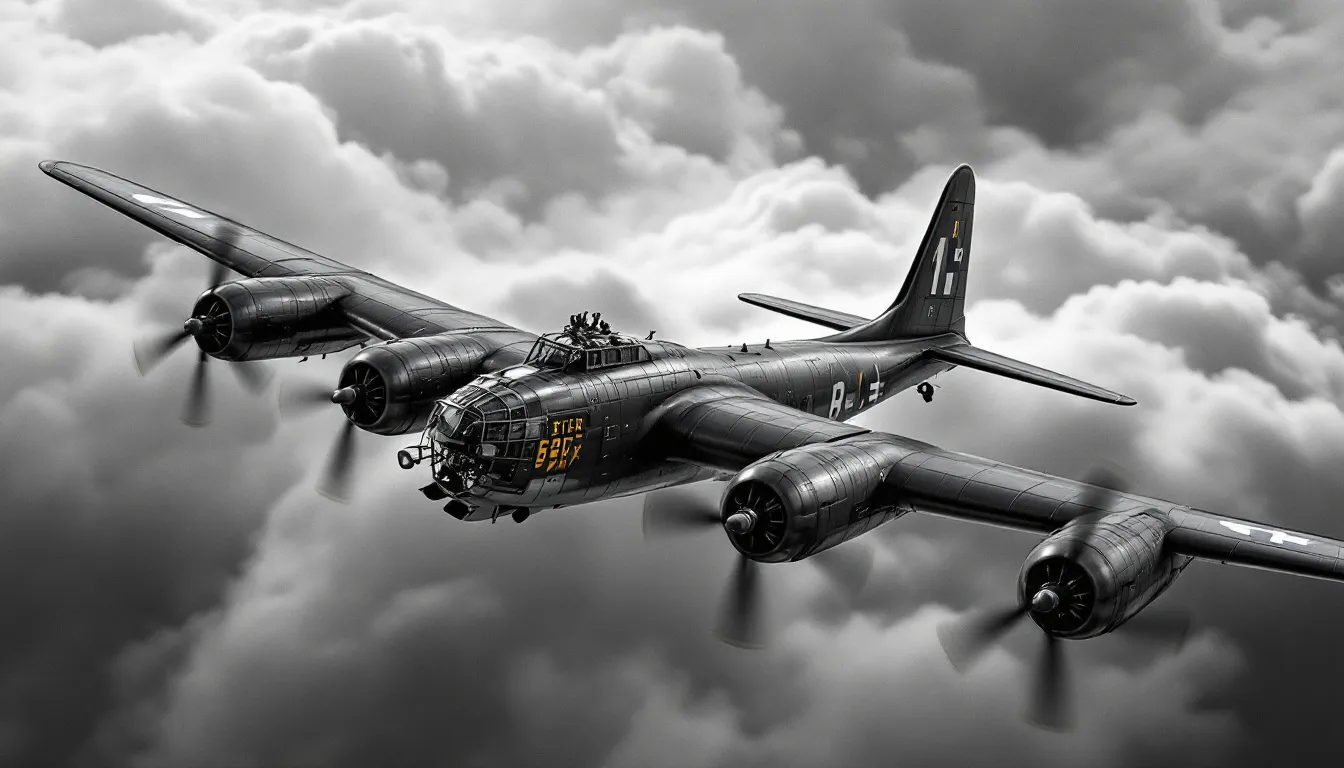
The B-17 was developed in the 1930s as a high-flying, fast bomber for the United States Army Air Corps. Despite an early setback with a crash during testing, the initial orders for the B-17 came after a positive evaluation of its performance. The aircraft was first introduced into service in 1938 when the USAAC ordered 13 units for testing.
The name “Flying Fortress” was coined by a reporter in 1935 due to the aircraft’s numerous machine gun placements, a feature that set it apart from other bombers of its time. Originally, the B-17’s armament consisted of five .30 caliber machine guns, designed to protect it during missions. The B-17 incorporated advanced avionics, such as the Norden bombsight, which significantly improved bombing accuracy in high-altitude missions.
The B-17’s development marked the beginning of a new era in strategic bombing. Its ability to fly long distances with a heavy bomb load made it an essential asset for the United States’ air strategy during World War II. As we delve deeper into its design evolution and operational history, we’ll see how this aircraft truly earned its nickname, the “Flying Fortress.”
Design Evolution and Variants
The B-17 design evolved over time, with numerous improvements made to its engines and defensive armament. From its initial prototypes to the final B-17G model, each variant brought new advancements that enhanced its performance and combat effectiveness.
We will explore the early models, the significant improvements in the B-17E and F models, and the final version, the B-17G.
Early Models
The initial prototype, Model 299, aimed to fulfill a U.S. Army Air Corps requirement for a long-range bomber capable of carrying 2,000 pounds of bombs. The Y1B-17 variant introduced more powerful engines and an improved landing gear design over its predecessor. These early versions emphasized heavy defensive armament, allowing them to withstand significant battle damage, though this came at the cost of bomb load capacity.
The mass production capabilities of the B-17 allowed for quick manufacturing and repair, which was crucial for maintaining operational readiness during the war. These early models laid the foundation for more advanced versions, each iteration enhancing the B-17’s capabilities, making it an even more formidable bomber.
The B-17E and F Models
The B-17E model featured a redesigned vertical stabilizer and added a tail gunner position to enhance its defensive capabilities. This model also introduced crucial improvements such as an extended fuselage and additional turret positions for better defensive coverage.
The B-17F introduced a one-piece plexiglass nose that improved visibility and was complemented by more effective armament configurations. These changes significantly enhanced the B-17’s ability to defend itself against enemy fighters, making it an even more effective weapon in the Allied arsenal.
The Final Version: B-17G
The B-17G model featured significant upgrades, including:
-
An increase in armament to thirteen machine guns, improving its defensive firepower significantly
-
A chin turret for better forward defensive capabilities
-
A ‘Cheyenne’ tail turret design that improved the field of fire for the tail gunners
These enhancements made the B-17G the most advanced and formidable version of the Flying Fortress, capable of mounting a robust defense while carrying out its bombing missions with precision and effectiveness.
Operational History and Combat Use
The B-17 underwent several design changes throughout its production, resulting in multiple variants optimized for different roles. Its upgrades in weaponry and defensive armaments increased its combat effectiveness. The B-17 Flying Fortress has been recognized for its significant contributions to World War II, becoming a symbol of American resilience and innovation.
We will delve into its initial deployments, role in the European theater, and contributions in the Pacific theater.
Initial Deployments
The B-17 Flying Fortress began its operational missions in mid-1942, marking a pivotal moment for US strategic bombing efforts in World War II. The initial successful mission of B-17s targeted the Rouen marshaling yards in France on August 17, 1942, utilizing advanced bombing techniques with the Norden bombsight. These early missions faced numerous operational challenges, including the need for rapid turnarounds, effective maintenance, and strategic formation flying to counter enemy defenses.
Life aboard a B-17 involved strong camaraderie as crews faced extreme conditions and high risks on perilous missions. Before their missions, B-17 crews participated in detailed briefings to prepare for various challenges, including enemy defenses and flight conditions.
Role in European Theater
Mass bombing of military targets and population centers was a key role of the B-17 in the European theater. The independent strategic mission of air power was the destruction of warmaking capacity, focusing on crippling the German nation and its ability to wage war. During missions, B-17s operated in formations sometimes numbering 1,000 or more aircraft.
These bombing missions were crucial in disrupting German war efforts, targeting factories, transportation hubs, and military installations across occupied territories in Western Europe. The relentless air offensive helped weaken the German defenses and contributed significantly to the Allied victory in the European theater.
Pacific Theater Contributions
The B-17s were heavily involved in various bombing missions across the Pacific theater, targeting enemy installations and troop concentrations. One notable mission was the bombing of Japanese bases in the Philippines, which played a significant role in disrupting enemy supply lines.
The contribution of B-17s in the Pacific helped to shift the balance of power against Japan, demonstrating the effectiveness of heavy bombers in this theater and contributing to key victories in major battles.
Life Aboard a B-17
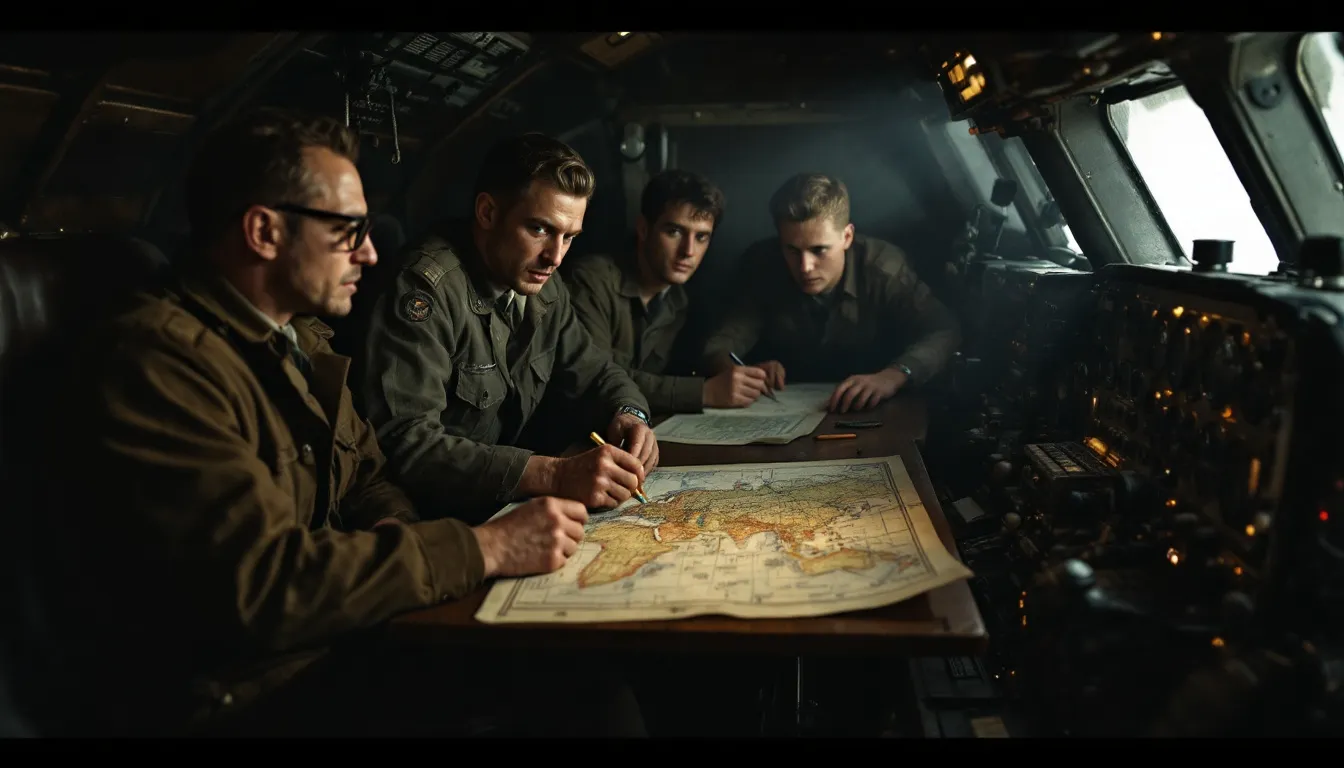
Life aboard a B-17 was a blend of camaraderie, courage, and constant vigilance. The aircraft’s crews faced extreme conditions, high risks, and the ever-present threat of enemy fighters and anti-aircraft fire. The B-17 has been featured prominently in films and documentaries, reflecting its status as an iconic symbol of American airpower during World War II.
We will explore the crew composition, daily operations, and stories of notable crews and heroes.
Crew Composition
A standard B-17 crew typically consisted of ten members, including:
-
the pilot
-
co-pilot
-
navigator
-
bombardier
-
various gunners
Each crew member had specific duties, such as operating defensive armaments or handling navigation and communication tasks during missions. The crew worked together in a tightly-knit team to ensure the success of their missions and the safety of their comrades.
The pilot and co-pilot were responsible for flying the aircraft, while the navigator and bombardier ensured the aircraft stayed on course and accurately dropped its payload. Gunners manned the numerous machine guns, providing vital defense against enemy fighters.
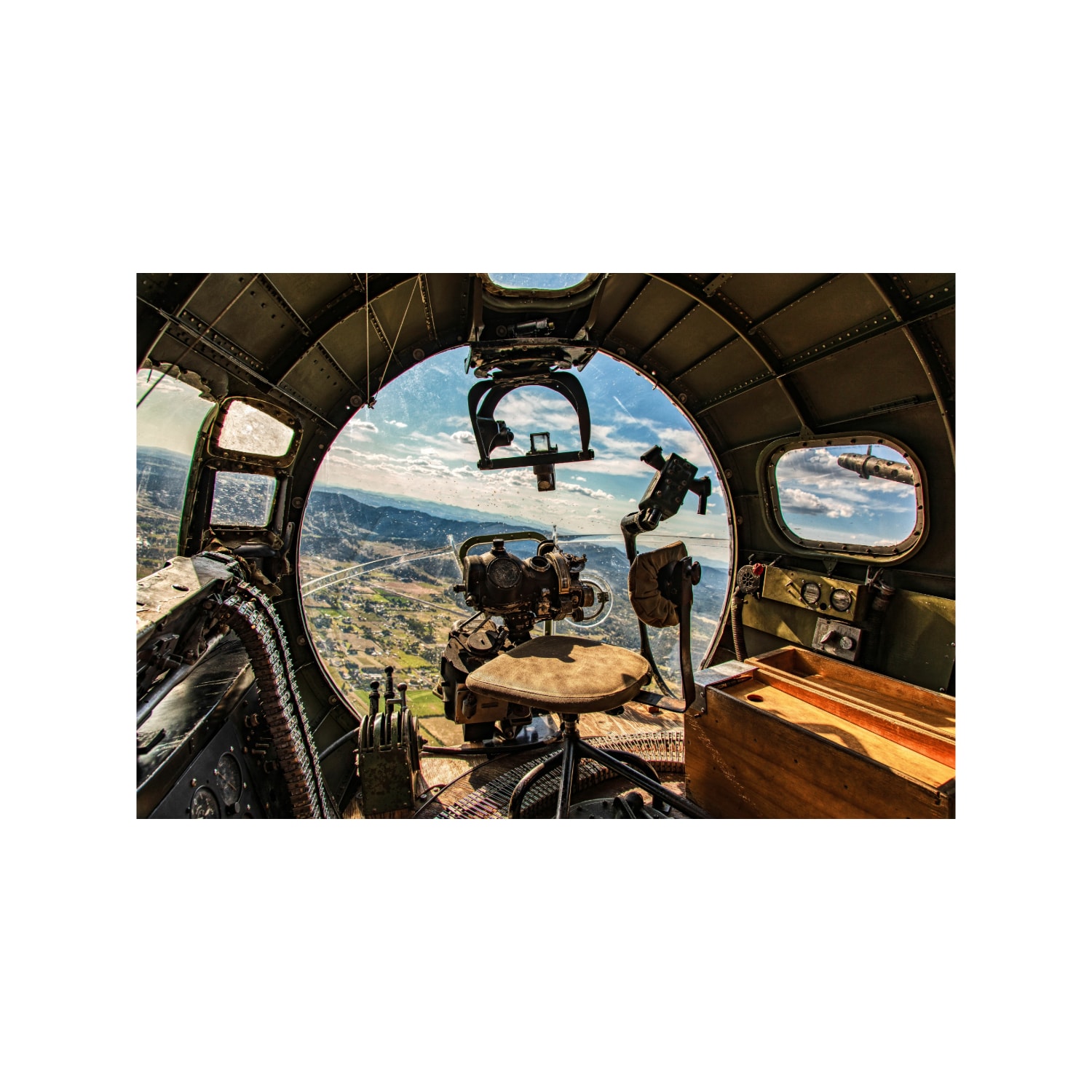
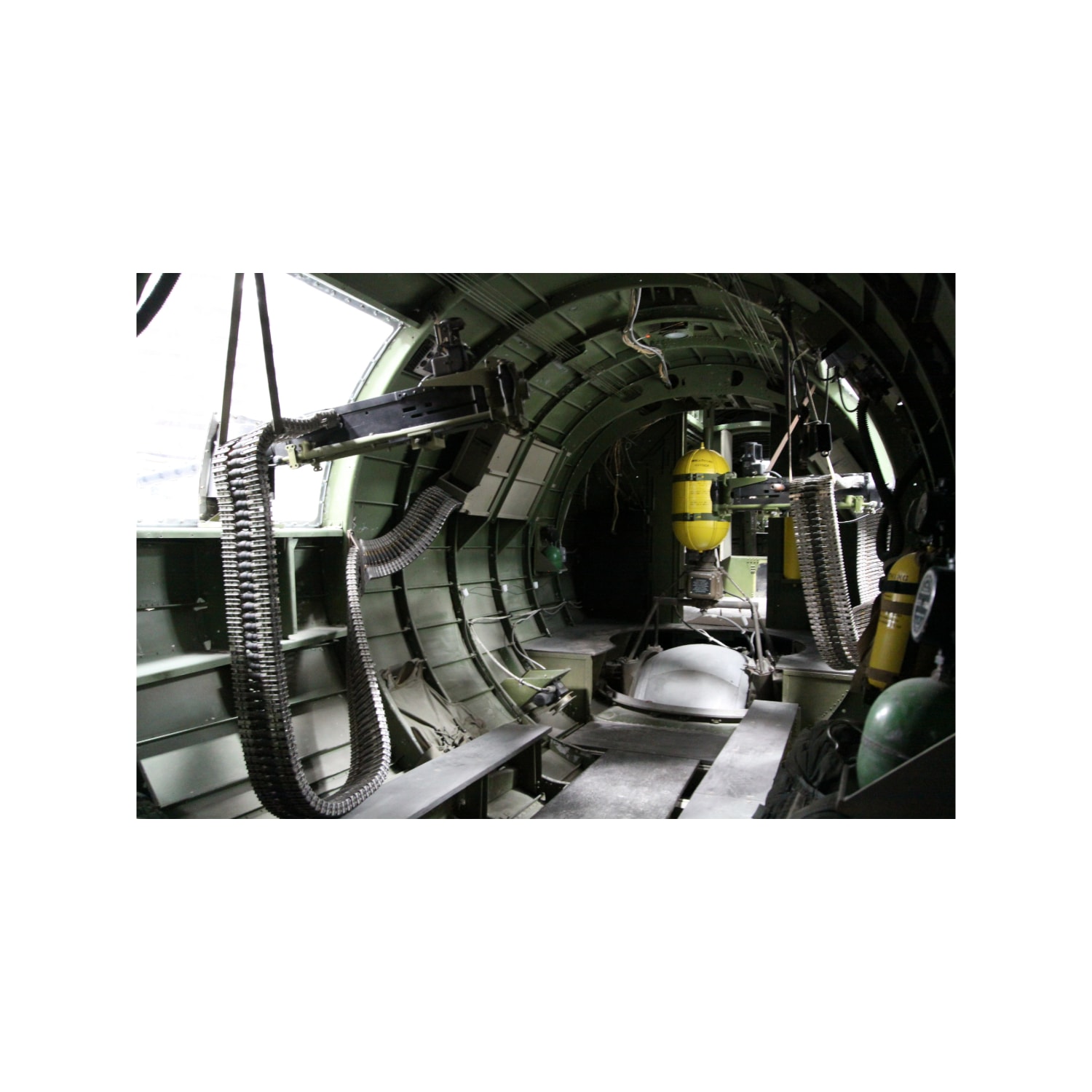
Daily Operations
Daily routines for B-17 crews included extensive mission briefings, equipment checks, and engagement in various combat scenarios while airborne. During missions, crew members had to work in unison to perform tasks such as manning the various gun positions and executing bombing runs.
These operations required precise coordination and unwavering focus, as any mistake could prove fatal in the hostile skies.
Notable Crews and Heroes
B-17 crews displayed remarkable courage in the face of overwhelming enemy fire, often executing missions that seemed nearly impossible. The famous crew of the B-17 ‘Yankee Doodle Dandy’ became renowned for their incredible determination and effectiveness in combat, successfully completing numerous missions despite severe damage. Another exemplary crew was the ‘Hell’s Angels,’ known for being the first to complete 50 missions in a B-17, showcasing their bravery and tenacity throughout the war.
Several members of B-17 crews were awarded the Medal of Honor for their exceptional bravery during missions, including acts of heroism that saved the lives of their crewmates. One notable recipient of the Medal of Honor was 1st Lt. Edward W. Dyer, who demonstrated extraordinary valor by sacrificing himself to save his crew during a bombing raid.
The Story and Significance of the B-17G "Shoo Shoo Shoo Baby"
Among the many B-17s that soared through hostile skies during World War II, few embody the spirit and resilience of their crews quite like the B-17G "Shoo Shoo Shoo Baby." This particular aircraft, assigned to the 91st Bomb Group—famously called “The Ragged Irregulars”—became a symbol of both endurance and adaptability in the face of adversity.
Commissioned into service in early 1944, "Shoo Shoo Shoo Baby" carried out numerous high-stakes missions over Europe. Facing the ever-present dangers of anti-aircraft fire and enemy fighters, it sustained heavy damage on several occasions yet repeatedly brought its crew home. Over the course of 24 combat sorties, the plane targeted key industrial and strategic sites, contributing to the relentless bombing campaign that weakened Axis forces and hastened the end of the conflict in Europe.
Its journey didn’t end with its final mission. After being forced to land in neutral Sweden due to engine trouble—a rare occurrence for B-17s—both the aircraft and its crew were interned, adding another chapter to its remarkable story. Decades later, after being discovered abandoned on a French airfield, "Shoo Shoo Shoo Baby" was painstakingly restored, reflecting the dedication of individuals intent on preserving the memory of those who served aboard these iconic bombers.
Today, "Shoo Shoo Shoo Baby" serves as more than a relic of the past. It stands as a testament to the bravery of the bomber crews and the enduring legacy of the Flying Fortress—a reminder of the extraordinary challenges faced by the airmen who fought to secure victory in World War II.
Deployment of "Shoo Shoo Shoo Baby"
One notable B-17G, affectionately named Shoo Shoo Shoo Baby by its crew in tribute to a well-known song of the era, was assigned to the 91st Bomb Group—the “Ragged Irregulars.” This aircraft operated out of Bassingbourn, England, a key base for Allied heavy bomber missions during World War II. The 91st Bomb Group gained a reputation for its tenacity, and Shoo Shoo Shoo Baby joined many other Flying Fortresses in the skies over Europe, contributing to the group’s distinguished combat record.
The Restoration of "Shoo Shoo Shoo Baby"
The journey of the B-17G "Shoo Shoo Shoo Baby" from neglect to renewed glory is a testament to both the resilience of these iconic aircraft and the dedication of aviation enthusiasts. Discovered abandoned in France in the late 1960s, the aircraft was offered to the United States as a gesture of goodwill. Its path to restoration began when it was transported to Dover Air Force Base in Delaware.
There, a group of passionate volunteers and restoration experts embarked on a decade-long mission to bring "Shoo Shoo Shoo Baby" back to life. This painstaking process required sourcing rare parts, meticulously repairing and replacing damaged structures, and restoring the aircraft’s systems to their original operating condition. Every detail—from the airframe and engines down to the historically accurate markings—received careful attention.
After ten years of dedicated work, "Shoo Shoo Shoo Baby" was finally restored to flying condition. Its triumphant ferry flight to its new home at a museum in 1988 marked the end of one chapter and the beginning of another, as it now stands as both an educational exhibit and a tribute to those who built, maintained, and flew the B-17s.
Notable Features of the B-17G "Shoo Shoo Shoo Baby"
The B-17G "Shoo Shoo Shoo Baby" stands as an excellent example of the aircraft’s final configuration, showcasing both its robust defensive measures and interior adaptations for crew operations. Step inside, and the first thing you’ll notice is the cockpit—a compact, utilitarian space packed with instrumentation, offering pilots impressive visibility over expansive bombing missions. Directly behind, the navigator and bombardier compartments reveal how sophisticated targeting and navigation systems—such as the famed Norden bombsight—were incorporated in close quarters.
Further inside the fuselage, the waist and tail gunner positions are clear reminders of the Flying Fortress’s defensive emphasis. Each station was equipped with .50 caliber machine guns, placed to maintain all-around protection. The rear gunner’s compartment, complete with the “Cheyenne” tail turret, highlights the G model’s final leap in rear-facing firepower. Passing through the aircraft’s interior offers a firsthand sense of the close-knit teamwork required among the crew in combat.
Externally, “Shoo Shoo Shoo Baby” is distinguished by its nose art, a playful hallmark of World War II bombers, giving the aircraft a touch of personality and crew pride. The museum’s restoration also includes carefully refinished sheet metal and historically accurate paint schemes, concealing repairs but preserving the authentic appearance of a combat-ready B-17G. These combined features, both inside and out, help tell the story of how the Flying Fortress balanced rugged survivability with the needs of its crew at every stage of its deployment.
The B-17G "Shoo Shoo Shoo Baby"—Current Status
"Shoo Shoo Shoo Baby," another well-known B-17G, has been relocated from public display and is now housed in the restoration area, awaiting its next chapter. This historic aircraft is slated for eventual transfer to the Smithsonian’s National Air and Space Museum, where it will join other legendary aircraft in preserving aviation heritage for generations to come.
The Many Names and International Service of the B-17G
One of the most storied examples of the B-17G is the aircraft famously known as Shoo Shoo Shoo Baby. Like many B-17s that survived the war, this bomber accumulated a colorful history—not just in combat, but in the names and identities it carried as it passed through the hands of different crews and even nations.
The aircraft’s journey began in March 1944, when it joined the 91st Bomb Group—nicknamed “The Ragged Irregulars”—at Bassingbourn in England. The crew, taking inspiration from a popular tune of the time, affectionately dubbed the bomber Shoo Shoo Shoo Baby. Under this name, it flew 24 missions over Europe, bravely enduring enemy fire and sustaining flak damage on several occasions. Its missions included bomb runs over major German cities such as Frankfurt, highlighting the strategic importance placed on the B-17 in the air campaign.
A twist of fate saw the bomber forced to land in neutral Sweden during a mission over Poland, where the aircraft and crew were subsequently interned. With the end of hostilities, the B-17's story didn’t simply conclude. Instead, it embarked on a new chapter abroad, eventually serving under Danish markings and adopting the moniker Store Bjørn—Danish for “Big Bear.” This phase added another international layer to its storied service life, reflecting the B-17’s widespread use beyond just American forces.
After its operational life drew to a close, the bomber was rediscovered abandoned in France, a testament to the unpredictable paths warbirds can take. Its subsequent return to the United States and meticulous restoration preserves not only its physical form but also the rich tapestry of names and service histories that these legendary aircraft often accumulate.
Challenges and Innovations
The B-17’s design allowed it to absorb significant damage and still return to base, which contributed to its reputation for toughness among aircrews. The challenges faced by B-17 crews were immense, but through a combination of strategic planning and technological advancements, these obstacles were overcome.
We will delve into how they overcame enemy defenses, the technological innovations that contributed to their success, and the maintenance and logistical efforts that kept them flying.
Overcoming Enemy Defenses
B-17s operated in large formations of over a thousand aircraft to maximize their defensive capabilities against enemy fighters. Flying in tight formations allowed the B-17 crews to create overlapping fields of fire, which maximized their defensive firepower and provided mutual support against enemy attacks. This strategy was crucial in countering the formidable defenses posed by enemy fighters and anti-aircraft artillery.
The B-17 was designed with a robust armament layout to defend itself against enemy fighter attacks. Its heavy defensive armament included multiple machine gun positions that allowed the crew to fend off enemy fighters from all directions. These features, combined with strategic formation flying, made the B-17 a formidable opponent in the skies.
Technological Advancements
The B-17G’s engines were powered by General Electric B-2 turbochargers, which enhanced its performance at high altitudes. This technological advancement allowed the B-17 to maintain its speed and altitude, making it more difficult for enemy fighters to intercept. Additionally, the B-17G featured electric turrets for its forward, upper, and lower defensive positions, which improved the ease and accuracy of aiming.
All machine guns on the B-17G were 12.7 mm caliber, with a total ammunition capacity of 5770 rounds. Improvements in bomb load capacity allowed the B-17 to carry heavier payloads for strategic bombing missions. This bomber could carry a maximum bomb load of 9600 pounds, with options for even heavier configurations. These advancements made the B-17 a more effective and versatile aircraft in the war effort.
Maintenance and Logistics
Efficient maintenance routines were crucial for keeping B-17s operational during extensive bombing campaigns. The logistical support for the B-17 included a complex supply chain for spare parts and munitions, ensuring that these aircraft could be quickly repaired and returned to service.
The dedication of ground crews and the strategic planning of logistical operations were key components in the success of the strategic air forces B-17’s missions.
Legacy and Cultural Impact
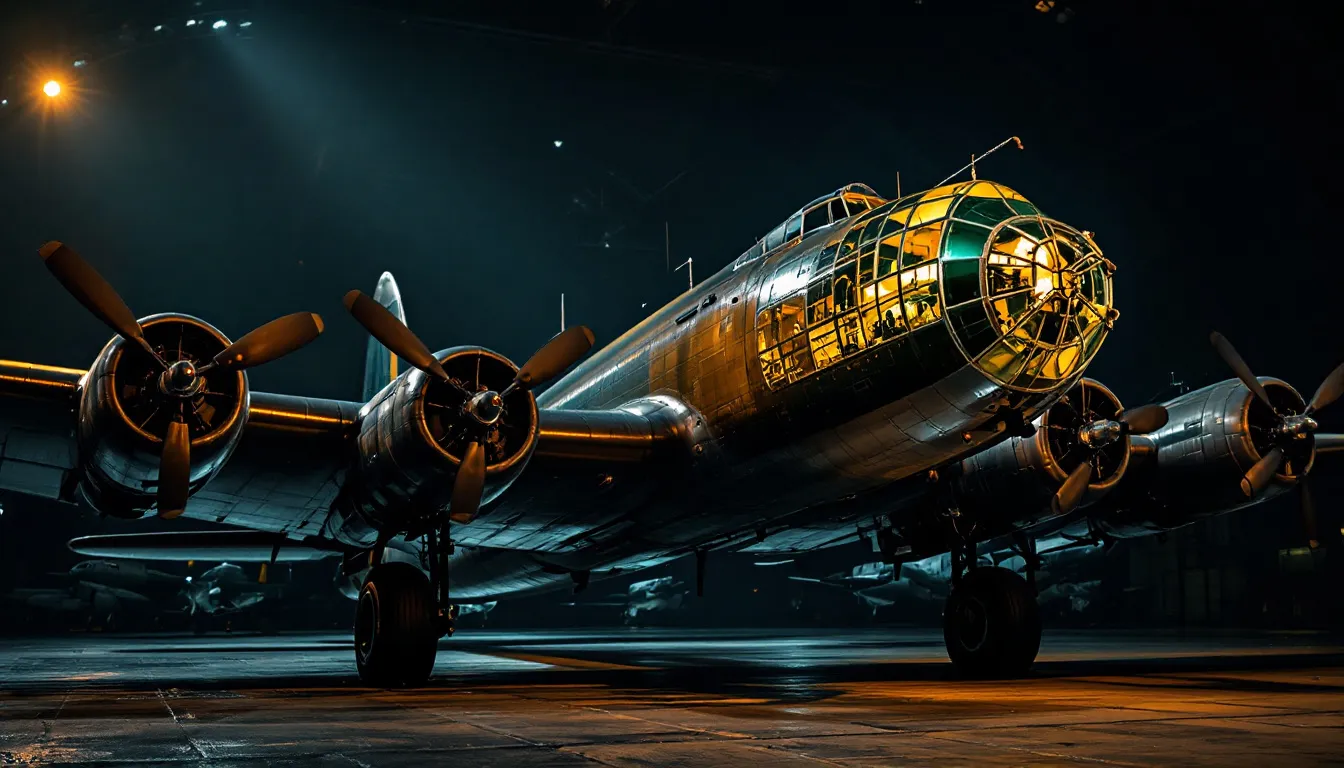
The B-17 Flying Fortress earned its place as one of the most iconic bombers of World War II. Its heavy firepower and multiple machine gun emplacements led to its nickname, the “Flying Fortress.” The B-17’s legacy extends beyond its wartime contributions, influencing post-war aviation, inspiring numerous cultural works, and being preserved in museums around the world.
We will explore its post-war usage, preservation efforts, and representation in media.
Post-War Usage
After World War II, many B-17s were scrapped, repurposed for Air Force research, or sold as surplus. Some were used for air-sea rescue missions, drone control aircraft, and various other roles, demonstrating the versatility and enduring utility of the B-17 design.
Despite the end of the war, the B-17 continued to serve in various capacities, contributing to aviation advancements and military operations.
Preservation and Museums
One of the most notable surviving B-17s, the B-17D ‘The Swoose,’ is undergoing restoration at the National Museum of the United States Air Force. This restoration effort highlights the importance of preserving historical aircraft for future generations. Many other B-17s have been preserved in military museums, allowing visitors to experience the historical significance of the aircraft firsthand.
These preserved B-17s serve as a testament to the bravery and ingenuity of the crews who flew them and the engineers who designed them. By visiting these museums, people can gain a deeper appreciation for the role the B-17 played in achieving air superiority during World War II and its impact on subsequent generations of aviation enthusiasts.
Representation in Media
The bravery of many B-17 crews has been a prominent theme in various films and literature, reflecting their heroic actions during World War II. Stories of individual B-17 crew members, such as Colin Kelly, who famously crashed his aircraft into a Japanese battleship, have become iconic within the Air Force and popular media. These individual stories and representations have solidified the B-17’s status as a symbol of resilience and heroism in American military history.
The remarkable actions of B-17 crews have been depicted in various documentaries and films, showcasing their strategic importance and courage. These portrayals have contributed significantly to the cultural legacy of the B-17, ensuring that the stories of these brave men continue to inspire future generations.
Specifications and Performance (B-17G)
The B-17G reaches a maximum speed of 462 km/h at an altitude of 7620 meters. This impressive speed and altitude capability made it a formidable opponent in the skies, allowing it to evade and counter enemy fighters effectively. The aircraft’s practical range of 5430 kilometers when fully loaded enabled it to conduct long-range bombing missions deep into enemy territory.
Equipped with thirteen 12.7 mm machine guns, the B-17G provided comprehensive defensive coverage, ensuring the safety of its crew during missions. Its robust construction and advanced avionics, including the Norden bombsight, made it one of the most effective heavy bombers of World War II.
Summary
The B-17 Flying Fortress stands as a testament to American resilience, innovation, and air power during World War II. Its development, from the early prototypes to the advanced B-17G model, showcased significant advancements in aviation technology and strategic bombing capabilities. The B-17’s operational history is marked by its significant contributions in both the European and Pacific theaters, where it played a crucial role in the Allied victory.
The legacy of the B-17 extends beyond its wartime service. It has left an indelible mark on popular culture, inspired countless stories of heroism, and continues to be preserved and celebrated in museums around the world. The B-17 Flying Fortress remains a symbol of courage and ingenuity, reminding us of the incredible feats achieved by those who designed, built, and flew this legendary aircraft.
Frequently Asked Questions
Why was the B-17 called the "Flying Fortress"?
The B-17 was called the "Flying Fortress" because of its extensive defensive armament, which allowed it to protect itself effectively against enemy fighters. This feature made it a formidable presence in wartime aviation.
What was the primary role of the B-17 during World War II?
The primary role of the B-17 during World War II was to conduct strategic bombing missions aimed at crippling the enemy's war-making capacity by targeting military installations, factories, and transportation hubs. Its effectiveness in this role significantly contributed to the Allied war efforts.
How did B-17 crews protect themselves from enemy fighters?
B-17 crews effectively protected themselves from enemy fighters by flying in tight formations to maximize defensive firepower through overlapping fields of fire, along with leveraging the aircraft's substantial armament.
What were some of the technological advancements in the B-17G model?
The B-17G model included significant technological advancements like General Electric B-2 turbochargers for better high-altitude performance, electric turrets for enhanced defensive capabilities, and an increased bomb load capacity. These improvements greatly enhanced its operational effectiveness.
How is the B-17 preserved and remembered today?
The B-17 is preserved and remembered today through its display in military museums, such as the restoration of the B-17D 'The Swoose', and its representation in films, literature, and documentaries that emphasize its historical significance. This ongoing recognition keeps the legacy of the B-17 alive for future generations.







